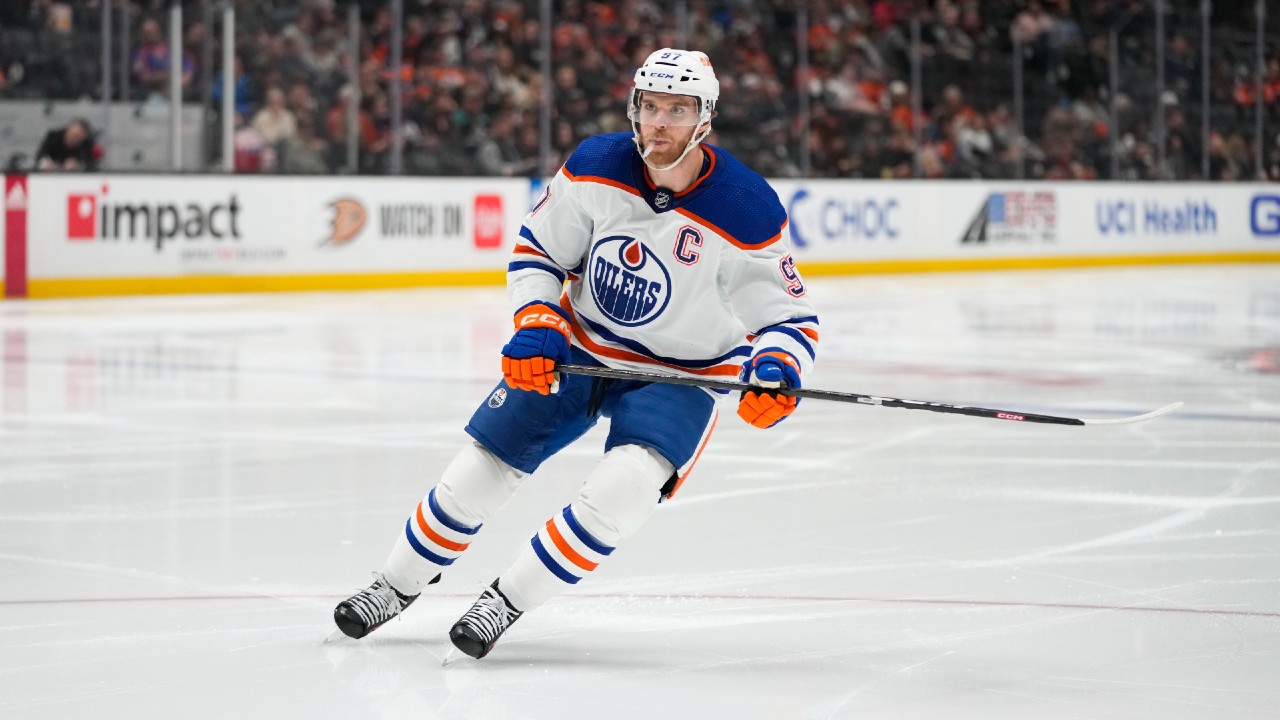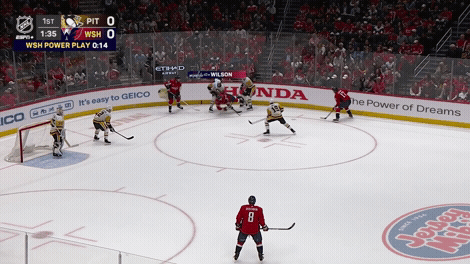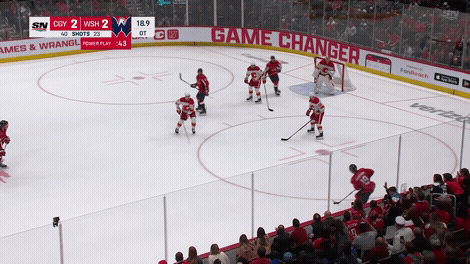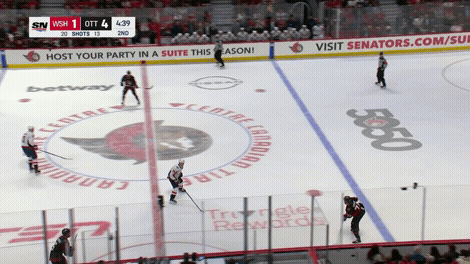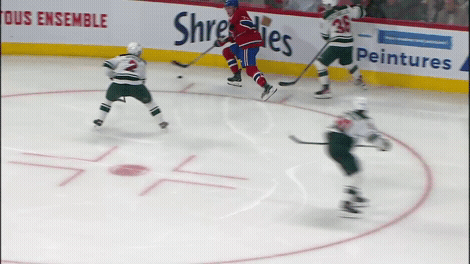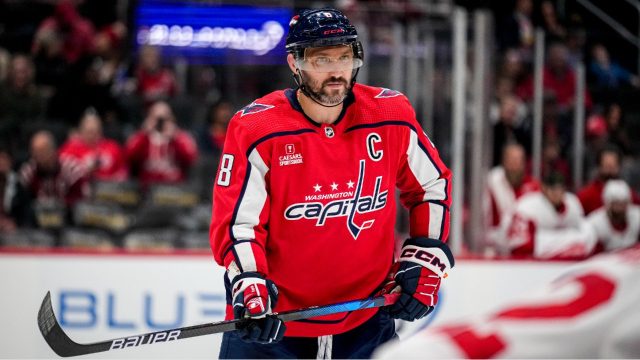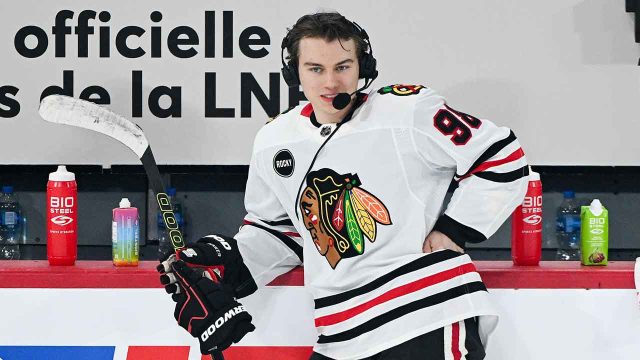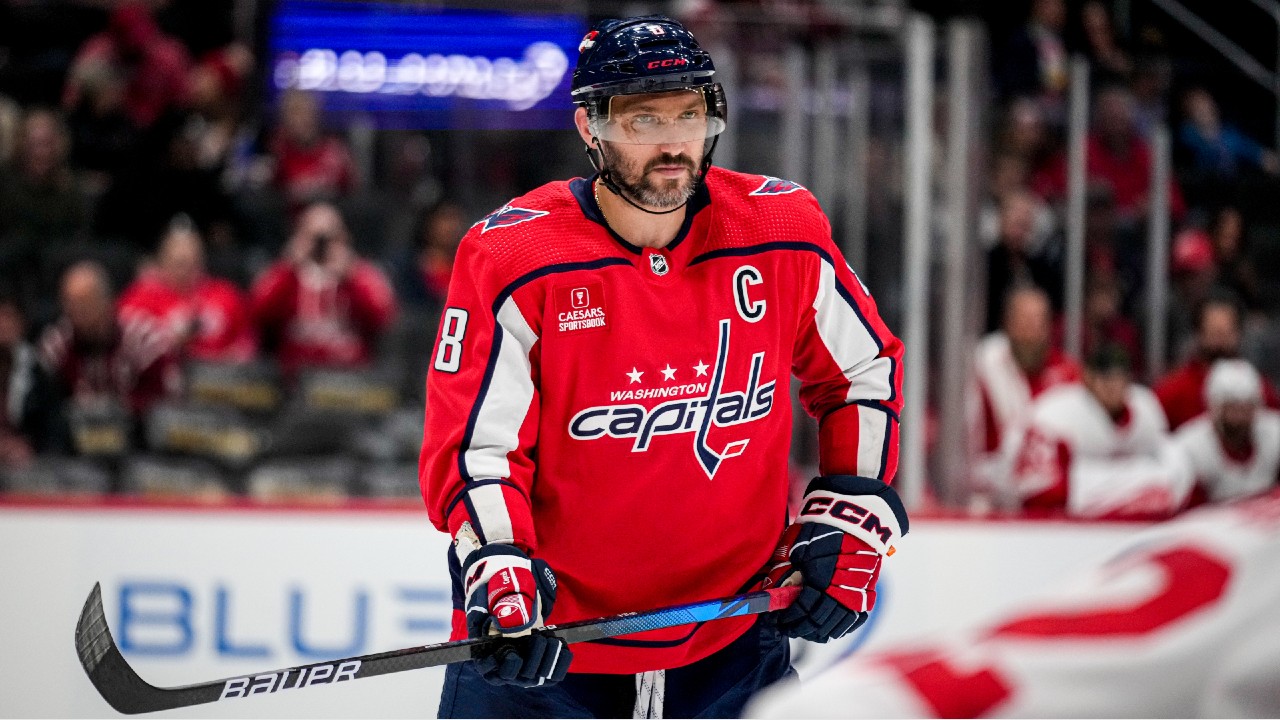
The Friday Four, a collection of thoughts and information on some intriguing player performances, dives into early reactions to:
• Alex Ovechkin going without a shot in back-to-back games for the first time in his career and the Washington Capitals team around him
• A special game and moment in what could be Marc-Andre Fleury‘s last trip through Montreal
• Cale Makar‘s astonishing historical mark and how he compares to Bobby Orr
• And why Matthew Tkachuk is the most overdue goal scorer in the NHL
ALEX OVECHKIN, WASHINGTON CAPITALS
Just a few games into the new season, we want to start teasing out meaningful early takeaways that could be something on a season-long scale, especially if it’s a trend that confirms pre-season notions.
Watching Alex Ovechkin start the season without a goal in three games isn’t surprising or alarming on its own. Goal scorers are streaky and Ovechkin has had many longer goalless droughts before. Heck, Ovechkin went without a goal in his first three games last season as well, then wound up with 42. In 2012-13, he went goalless in his first four games and then finished with 32 in 48 games.
But when someone like Ovechkin goes two games in a row without getting a shot, it’s newsworthy. The league’s all-time leader in shots on goal is known as much for his shot volume as his goal-scoring prowess. It’s as defining to his game as the one-timer from the left circle on the power play.
About that: Ovechkin does not have any power-play shots on goal in three games.
So, what do we make of all this?
First, the player. Though Ovechkin doesn’t yet have a power-play shot, he still leads the Capitals with the most shot attempts on the man advantage. Almost all of those attempts have simply just missed the net rather than being blocked.
The entire Capitals power play has struggled to get anything going. Granted, they have a new coach trying to breathe more life into last season’s No. 16-ranked power play, so maybe it is going to take some getting used to.
The constant is Ovechkin in his office, but outside of the following PP sequence in overtime against Calgary where he had plenty of looks, I counted just two other times the Caps were able to set him up for his patented one-timer in a team-leading 14:52 of ice time with the extra man.
Although Ovechkin’s chances will eventually hit the net with greater frequency and start going in, our scout Jason Bukala sees a very troubling unit here.
“Watch these power-play clips,” Bukala noted of the video below. “Ovechkin stays on the ice for the entire two minutes, but the whole sequence is in slow motion from the breakout, to puck retrievals, puck movement and shot selection. All of it. The Caps are playing slow and moving the puck slow. Not a good combo.”
What’s even more concerning is that if this Caps team as a whole falls off this season, what the effect will be on Ovechkin’s ability to score, especially at 5-on-5. So far this season, Washington has been outshot 82-54 at 5-on-5, second-worst to only San Jose, with a 43.08 expected goals for percentage that’s 28th in the league. Ovechkin’s on-ice goals-for percentage is even worse than the team’s average (36.76), but it still isn’t even one of the five worst on the team.
The snail’s pace Bukala mentioned earlier is also noticeable at even-strength.
“The thing that really concerns me about them is they look slow, and not just Ovechkin … they constantly look behind,” Sportsnet’s Elliotte Friedman said Thursday on The Jeff Marek Show. “(Wednesday) night it just looked like Ottawa walked in there and was like, ‘We’re going to beat this team.’ … The Capitals, to me, just looked slower, they looked unsure.”
There’s no doubt this Capitals core is past its prime. There’s been a falling out with Evgeny Kuznetsov, who by the way is pointless in three games in his follow-up to a very disappointing 55-point season. Nicklas Backstrom is coming off hip resurfacing surgery, which GM Brian MacLellan didn’t seem sold he could effectively return from (Backstrom also doesn’t have a point). Anthony Mantha has never come close to delivering on his promise as a goal scorer and is a trade candidate. This is a retooling team that can’t really rebuild as long as Ovechkin is around and chasing history.
At this point, Washington has a zero per cent power play, just three goals in three games, and a 4.6 shooting percentage. All of that will improve to some degree, making it a good bet that an Ovechkin goal streak is somewhere around the corner.
But they also average a measly 22 shots per game, while bleeding chances against. They look slow and are chasing, yet to hold a lead in any game. Maybe this turns into a bumpy beginning they can shake off, but what we’ve seen confirms pre-season suspicions of where this team is in its timeline.
My bold prediction for the Capitals coming into 2023-24 was that Ovechkin would have the lowest goals per game production of his career, and the reason was because the roster around him is weakening. It’s still too early to chalk that one up as a win, of course, and Ovechkin could very well score 10 in his next eight games.
It’s a fool’s game to bet against a player who is the all-time leader in power-play goals and just 73 away from Wayne Gretzky’s overall goal record. But if Ovechkin’s actually going to see a downtick in goals at 38 years old, this is how it would happen.
MARC-ANDRE FLEURY, MINNESOTA WILD
Just two players remain in the NHL from before the lost 2004-05 lockout season and the radically different pre-salary cap era: Brent Burns and Marc-Andre Fleury.
Burns, 38, is still gong strong and chasing his first Stanley Cup with a very good Carolina Hurricanes team. He has one more year on his contract paying $8 million, so we expect he’ll be back again in 2024-25.
It’s less certain what Fleury’s plans are. A UFA at season’s end, the first-overall pick of the 2003 draft has done and won everything, and now shares Minnesota’s crease with Filip Gustavsson. Fleury is still going pretty strong himself and his first start this season was a win that meant a lot to him.
It was a cool moment and a game Tuesday when Fleury played in front of his hometown Montreal crowd for possibly the final time. He turned aside 26 of 28 shots, a few with Fleury-like flair, and earned a first star curtain call that everyone in attendance will remember.
“I just wanted to take a mental picture, such a nice feeling. But I didn’t want to stay out there too long,” Fleury said. “I don’t want them to think it’s my last game and I come back next year. That’s enough attention. Obviously, very flattering.”
How awesome would it have been for Fleury to have found his way to the Montreal Canadiens in his career?
With that win, Fleury moved just five back of Patrick Roy to tie for second on the all-time wins list. If he starts half of Minnesota’s regular season games this year, he’ll also become just the fourth goalie to start 1,000 games.
His career will be celebrated in the Hockey Hall of Fame one day and his personality will be missed from the game whenever he does retire. And although there are plenty of recent examples of what we’ve lost on the international stage, it’s a real shame that Fleury wasn’t afforded one more shot to be Canada’s goalie at the 2022 Winter Olympics (an event that more and more feels like a hugely lost opportunity to connect two generations of players in a true best-on-best).
The next emotional game like this one for Fleury could come Dec. 18, when the Wild make their only trip to Pittsburgh. On Feb. 12, the Wild will go to another former Fleury team in Vegas, and then visit the Golden Knights again April 12 when a playoff spot could be on the line. All will be must-watch moments for Fleury fans, just in case this is it.
CALE MAKAR, COLORADO AVALANCHE
It’s amazing that this isn’t the first time we’ve compared Cale Makar to Bobby Orr.
In December 2021, Makar started with 11 goals in 20 games for a 0.55 goals per game rate that had him on pace for roughly a 38-goal season. Only once in the cap era has a defenceman scored even 30 — Mike Green got 31 in 2008-09. Makar’s pace was special because, had he maintained course, 38 goals for a defenceman would have been the fifth-best mark ever for the position. Only Orr and Paul Coffey (twice) have scored 40 from the blue line.
Makar didn’t reach 30 goals that season. In fact, his 86-point total finished second to Roman Josi, but those were the two best offensive seasons by a blue-liner in the cap era until Erik Karlsson posted 101 points last season.
And here we are, two years later, again comparing the dynamic 24-year-old Makar to someone as historically unstoppable as Orr.
With an assist in Tuesday’s win over Seattle, Makar incredibly became the fastest defenceman to reach 250 points. Think about that and how crazy scoring was in the 1980s, or how much of a standout Orr’s career was before that — Makar has had a better career start than any of the Hall of Fame names you can think of from the ’60s, ’70s, ’80s …
In 32 Thoughts this week, Friedman put into context Makar’s historic pace and what he’d need to track down Ray Bourque’s all-time record for scoring at the position:
“Makar stands 278th all-time among blue-liners,” Friedman wrote. “The NHL record is 1,579 by Ray Bourque. Bourque did it in 1,612 games. At his current pace, Makar would need 1,523 games to pass the Hall of Famer. Let’s wish Makar good health, because he could do it. Who’s going to bet against him?”
With 250 points in 242 games, Makar’s career average is 1.03 points per game. If you zoom in to just the past two years, when he’s really hit his stride, Makar has averaged 1.11 points per game. For historical context, Bourque set the defenceman scoring record with a 0.98 points per game average.
Only two defenceman with at least 400 games played finished their career with a points per game average of at least 1.00. Coffey is one of them, at 1.09.
The other was Orr, who famously had his career cut short due to knee injuries and played just 657 NHL games. Though Orr was 30 years old when his career ended, he was just 26 when he had his last really effective season. Still, he finished with an astounding 1.39 points per game career average.
Orr jumped to the NHL at 18, while Makar waited until he was about to turn 20 before becoming an NHLer. To truly compare Makar’s brilliance to Orr’s dominance at his peak we have to consider: what would Makar have to do from here to equal Orr’s 1.39 points per game pace by the time he plays in his 657th game?
The answer: Makar would have to score 665 points in his next 415 games, a 1.60 points per game pace … better than Connor McDavid’s 1.49 career average.
Makar deserves to be celebrated for how he’s changing the defence position and the freedom he can play with. He could one day, way down the road, pass Bourque to set the all-time points mark for a blue-liner, win many Norris trophies and have an historical career in his own right.
But this is also sort of a Bobby Orr appreciation post.
MATTHEW TKACHUK, FLORIDA PANTHERS
Who is the most overdue goal scorer in the NHL?
Look no further than Matthew Tkachuk.
With 42 and 40 goals the past two seasons, Florida’s Tkachuk is on many radars as someone who could step up even more and cement himself as a truly elite game-breaker in this league. His first season in Florida led to a career-high 109 points and included the first post-season breakthrough of his career, too.
This season, he’s been somewhat snakebitten. In all situations, Tkachuk is the NHL’s leader in most expected goals without having actually scored one.
|
PLAYER |
ixG (all situations) |
Goals (all situations) |
|
Matthew Tkachuk, FLA |
3.23 |
0 |
|
Lukas Reichel, CHI |
2.56 |
0 |
|
Barret Hayton, ARI |
2.16 |
0 |
|
T.J. Oshie, WSH |
2.09 |
0 |
|
Yakov Trenin, NSH |
2.03 |
0 |
According to Natural Stat Trick, Tkachuk ranks second to only Auston Matthews with 3.23 expected goals this season. But, unlike Matthews, who began with back-to-back hat tricks, Tkachuk doesn’t have a single goal yet (but he does have four assists in four games).
By this time next week, we’d wager that each of the five players in that table will have at least one goal.


